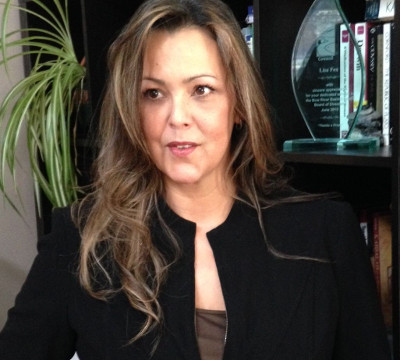Conversations around the Water Table with Project Blue Thumb (Part Six)
Reflections on Water for Life
By Amy Spark
This post is the final installment of a six-part interview series conducted and written by Project Blue Thumb.
Project Blue Thumb is a multi-stakeholder social lab co-convened by the Red Deer River Watershed Alliance and Alberta Ecotrust Foundation that takes a whole system approach to protecting water quality in the Red Deer River watershed. Building on the work of our current members, the PBT organizing team reached out to 13 multi-sector practitioners to hear their thoughts about the future of water in Alberta and potential directions. This post provides a snapshot from a few of our interviews relating to the Water for Life strategy.
Let’s take a trip down memory lane to 2003. It was a big year for water in Canada, especially along our three coasts: the largest ice shelf in the Artic fractured, hurricane Juan terrorized Halifax, and Canada’s first Marine Protected Area was declared off the coast of B.C. But what was happening in Alberta far away from these saltwater events? The provincial Water for Life (WFL) strategy was introduced by Alberta Environment. It may not have made national headlines to the same degree, but for those working in the water world of Alberta, it was a first of its kind.
The Water for Life strategy was designed to balance water quality and quantity needs with environmental concerns. The overarching goals of the framework incorporate social, economic, and environmental aspects of water issues:
1. Safe, secure drinking water supply
2. Healthy aquatic ecosystems
3. Reliable, quality water supplies for a sustainable economy
(Alberta Environment 2003, p.7)
In order to meet these goals, the Government of Alberta promotes multi-stakeholder engagement through three strategic partnerships: the Alberta Water Council at the provincial scale, Watershed Planning and Advisory Councils (WPACs) at the regional scale, and local Watershed Stewardship Groups. Two existing watershed advocacy organizations rebranded as WPACs: the Bow River Basin Council and North Saskatchewan Watershed Alliance. Since 2003, nine new WPACs have formed, the newest being the Mighty Peace Watershed Alliance in 2011.
As of 2017, there are eleven multi-stakeholder nonprofit WPAC organizations across the province working toward healthy watersheds and communities.
For more information on the framework, see the Government of Alberta website.
What does this framework look like today? What has the impact been? Where are opportunities for growth or change? These questions came to light during our recent interview series. A conversation with Brett Purdy, Senior Director of the Water Innovation Program at Alberta Innovates, is a good place to start. Alberta Innovates is an organization that works at filling knowledge and technology gaps under the Water for Life strategy. Due to this unique relationship to the WFL framework, we asked Brett to share his perspective of watershed management since 2003:
“Alberta has been a leader in some areas. We have great planning mechanisms which manifest themselves in regional plans. We are great at planning, but don’t do near as well in implementation and execution. I think there is also some confusion around the role of WPACs. How much of their responsibility is actually ‘control’? There is a semblance of power and responsibility without the tools to implement recommendations.”

Brett highlights one of the major lessons from the past fourteen years: agreeing on a plan is an important step in the process; but implementing this plan is where it really counts. Now that Alberta has the planning process down, what’s really needed is a clarity of roles and the tools to put these plans into action.
Lisa Maria Fox, Executive Director of Sustainability Resources Ltd., agrees. Lisa has immense experience inside and outside the WFL framework, volunteering with both the Alberta Water Council and Bow River Basin Council, among other endeavours. She helpfully provided us with some more context on the limitations and challenges WPACs are facing.

***
PBT: How would you characterize watershed management in Alberta?
Lisa: When I started in the water world in Alberta fourteen years ago, I was enthusiastic about the Water for Life policy framework and the establishment of WPACs. I was keen not so much because they could build plans to inform management, but the planning process. Engaging stakeholders in ‘What is your watershed? How can we protect it? What are the limits that we can push in development?’ It has such promise to be a very powerful force in advocating for management of the watershed.
However, I feel there’s a huge gap between the ability of these plans to identify areas of concern and recommendations, and the implementation of these plans. The process really doesn’t have enough robustness from government to support actual management restrictions, or guidance and tools for municipal governments for protecting the watershed.
PBT: Why do you think this is?
Lisa: By the very definition of a WPAC, [the power] is watered down. They have to achieve full, broad scale consensus across users without putting the river first. The ‘river-first’ concept was never embedded in the Water for Life watershed management process. I don’t know what the right model is, but I just know we’ve watered down the strength of the WPACs in influencing change.
PBT: What are some key leverage points in influencing this change?
Lisa: I see this as a big challenge, but also a very easy win. If we were able to enable and resource these WPACs, we would be able to identify and pinpoint where the water quality monitoring, riparian monitoring, etcetera, should be set up. The [Water for Life] infrastructure is already there. We just need to build upon it. It may require putting together some sort of action group that contains government, WPACs, and some habitat-focused environmental non-profits so that we can actually define what role WPACs should play.
***
In March of this year, the Alberta Water Council released a report on the status of Water for Life. There are some promising recommendations, including a call to define and inventory source waters, develop a provincial water reuse policy, and improve accessibility of Water for Life documents. However, as reports typically do, it still has an emphasis on polices and planning, with less of an emphasis on who would be responsible to manage and enforce these plans.
This is because under the current strategy, the Government of Alberta is accountable for the implementation of Water for Life – not the Alberta Water Council or the WPACs. Their role is to advise and make recommendations. Yet we hear a consistent narrative that the government just doesn’t have the capacity to fully implement these plans.
Frankly, there’s just too much water-work to be done in this province. This is where WPACs and watershed stewardship groups can best add value. What if these WPACs were resourced to implement and enforce these plans? Then we have eleven on-the-ground strategically-placed organizations with the passion, resources, and mandate to protect our watersheds while using a multi-diverse stakeholder approach. Magic.
My conversation with Lisa reminded me of the plans my family would make when leaving for vacation each summer. My family is unique in the degree of organization we had; very detailed and well-intentioned plans would be drafted for our exit strategy before a long drive to BC. The real fear we would be left behind was real incentive for us to be ready. “If you’re not in the car by 7:30AM, ready to go, we’re leaving without you.”
So what will incent Albertans to achieve the water system we want in Alberta? What fear will spur us to action? And who should carry this mandate?
For the first fourteen years of Water for Life, the planning in watershed management has been imperative to its success, rather than the actual plans. Now that WPACs and communities are becoming more comfortable with the multi-stakeholder planning model, what we need to focus on is engaging citizens and institutions to bring these plans to life. How can we bring watershed planning off the report page and out into the landscape? How can these consensus-based plans be put into action? These are the questions we continually return to at Project Blue Thumb: how can we collectively ‘un-stick’ the systems we have in place to move forward in action? And how do we do that in a way that is systemic, intentional, inclusive, and creative? We’d love to hear your ideas and thoughts.
This concludes our six-part interview series on the future of water and watershed management in Alberta. We’re excited to begin incorporate all the lessons we’ve learned along the way into the Phase II of our social innovation lab.
Curious about the project? See the Project Blue Thumb blog for information on our interview series, or join in the conversation on Twitter: @BlueThumbLab #ABwater.
Sources:
Alberta Environment. 2003. Water for Life: Alberta’s Strategy for Sustainability. Edmonton: Government of Alberta.
